Morning with Michelangelo
Reflections on Rome inspired by a 6 am tour of the Sistine Chapel
When Michelangelo arrived in Rome in 1508 to paint the ceiling of the Sistine Chapel, he saw the city as filthy and vulgar. I am sympathetic to Michelangelo’s view as I walk alone across Saint Peter’s Square en route to the Vatican Key Master’s Tour.
Vatican City at 5:30 a.m. is humid and smells like urine. It’s especially putrid as I walk across the south side of Bernini’s colonnade, where people sleep in tents. But what I notice most at this hour are the seagulls. They cackle and scream like upset children and seem to grow bigger right before my eyes as they feast on piles of garbage, like Popeye when he eats a can of spinach.
And then my view quickly changes. Margherita, Rome's most passionate tour guide, awaits me with a hearty hello and an invitation to get coffee and maritozzi after the tour.
The small group enters the Vatican Museum through its Art Deco lobby. We file through a courtyard filled with classical sculptures, and then a window is opened for us to take in a panoramic view of the Eternal City.
Rome has been torched, occupied, sacked, plague-stricken, and abandoned, yet…there it is, and here we are. It doesn’t live tied to the past like its beautiful but snobby cousin Florence. Somehow, ancient Rome, medieval Rome, Renaissance Rome, Fascist Rome, and all the Romes in between still exist. Rome is a constantly spinning mirrorball that lets us see ourselves in the grand scope of history.
Most tourists see the Rome reflected by post-World War II filmmakers who used the recovering city as a movie set. Audrey Hepburn rode a Vespa through Roman traffic, ate gelato on the Spanish Steps, and Anita Ekberg romped through the Trevi Fountain. (Perhaps that’s what this tourist had in mind?)It’s a breezy, playful vision of Rome that was updated in the aughts when tourists were inspired to eat, pray, and love a plate of cacio e pepe.
But Rome always reflects power, and each of its ancient monuments could be a cautionary tale for our modern condition. In the first century B.C.E., the end of democracy came when a handful of patricians consolidated tremendous wealth from the cheap labor that had flooded Rome. They used the money to raise private armies and consolidate power, which is why I winced when reading that digital oligarchs Elon Musk and Mark Zuckerberg were talking to Roman officials about staging a cage fight in the Colosseum.
The pastoral Rome immortalized by the 18th century Grand Tour artists offers a reflection that modern Romans use to tolerate the neglected state of the city today just outside the central tourist districts. A cab driver I chatted with lamented the weeds masticating the monuments, though he said the corruption that created the situation would not soon change. He gestured toward the steps that lead to the scenic overlook on top of the Janiculum hill, covered in weeds and trash. Tourists stand at the bottom, looking back and forth between their guidebooks and the steps. It could look romantic or disgraceful, depending on how you view it.
The last stop on the Key Master’s Tour is the Sistine Chapel. We enter it in the dark, a sort of cleansing of our senses. I stand in front of Michelangelo’s “Last Judgement” like it’s the ocean, and when the lights come on, let it crash over me.
Painted 25 years after the ceiling, Michelangelo created an overwhelming and profoundly strange work of art. It includes wingless nude male angels who look like bodybuilders, a beardless Christ, and the Greek oarsmen Charon, who navigates the River Styx and the orange glow at hell’s mouth. There is at least one confirmed portrait of a man who once dared criticize the great artist portrayed with donkey ears and buck teeth. As much as Michelangelo disliked Rome, it was the only city where this artistic achievement could have been realized. It’s more audacious than beautiful, a boldly personal vision of the Kingdom of Heaven here in its earthly headquarters.
The mirrorball spins faster as I interlock my fingers behind my neck to look up at the ceiling, turning around and around to take in all the details. Sight and memory collide as I try to distinguish the finger of God stretching toward Adam from the many versions I’ve seen reproduced in textbooks, in memes, and on the walls of New York City pizzerias.
Two women enter the Sistine Chapel with buckets and begin to mop the mosaic floor. It’s time to leave, though I linger behind and sneak in one forbidden photo.
Post-tour, Margherita and I gushed about the experience. We talked about how even though the heat or difficult guests can wear you down when you work in tourism, intimate contact with great art can instantly fill you back up. An overstuffed maritozzo tasted like a delicious metaphor.
I returned to my apartment for a 9 a.m. nap, and as I closed the shutters, I saw a view I recognized from an ancient Roman fresco.
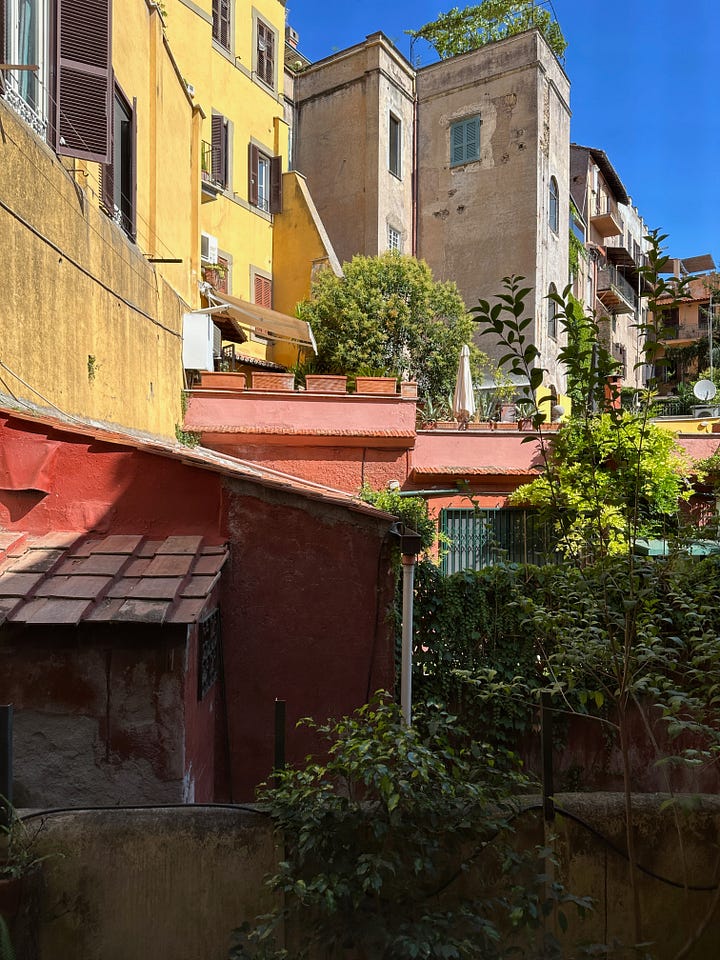
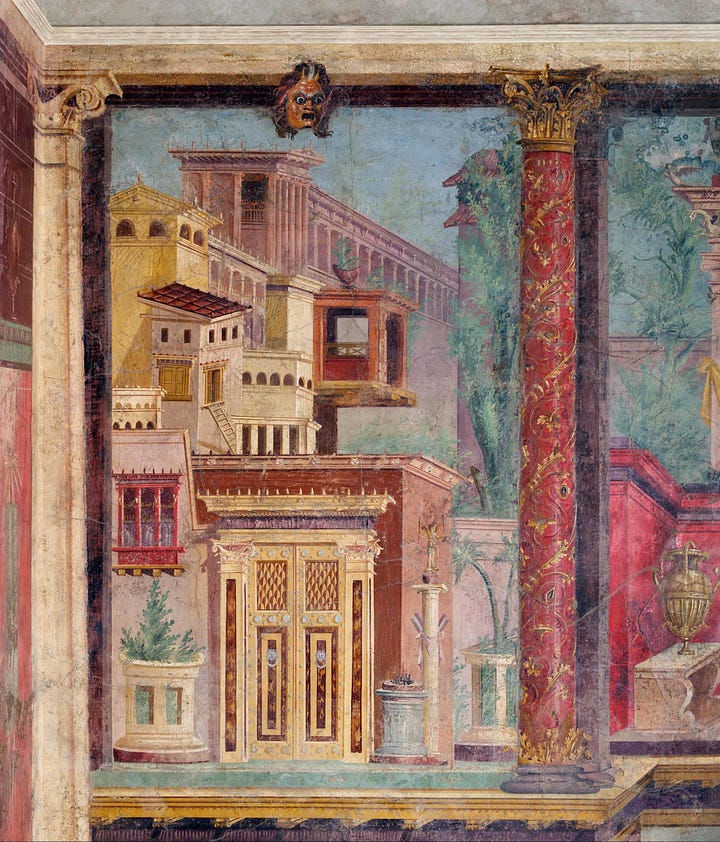
The mirrorball is constantly spinning.


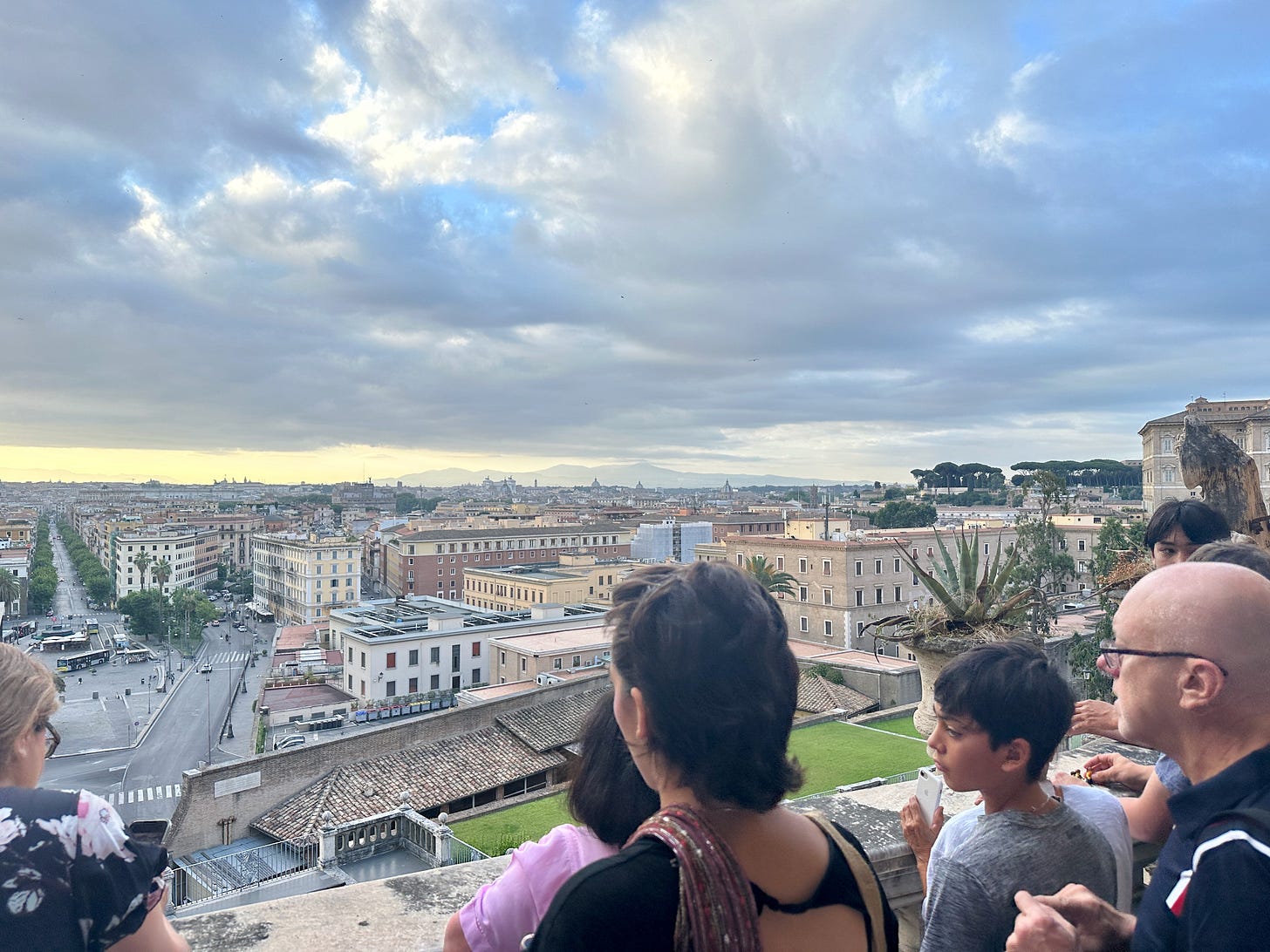
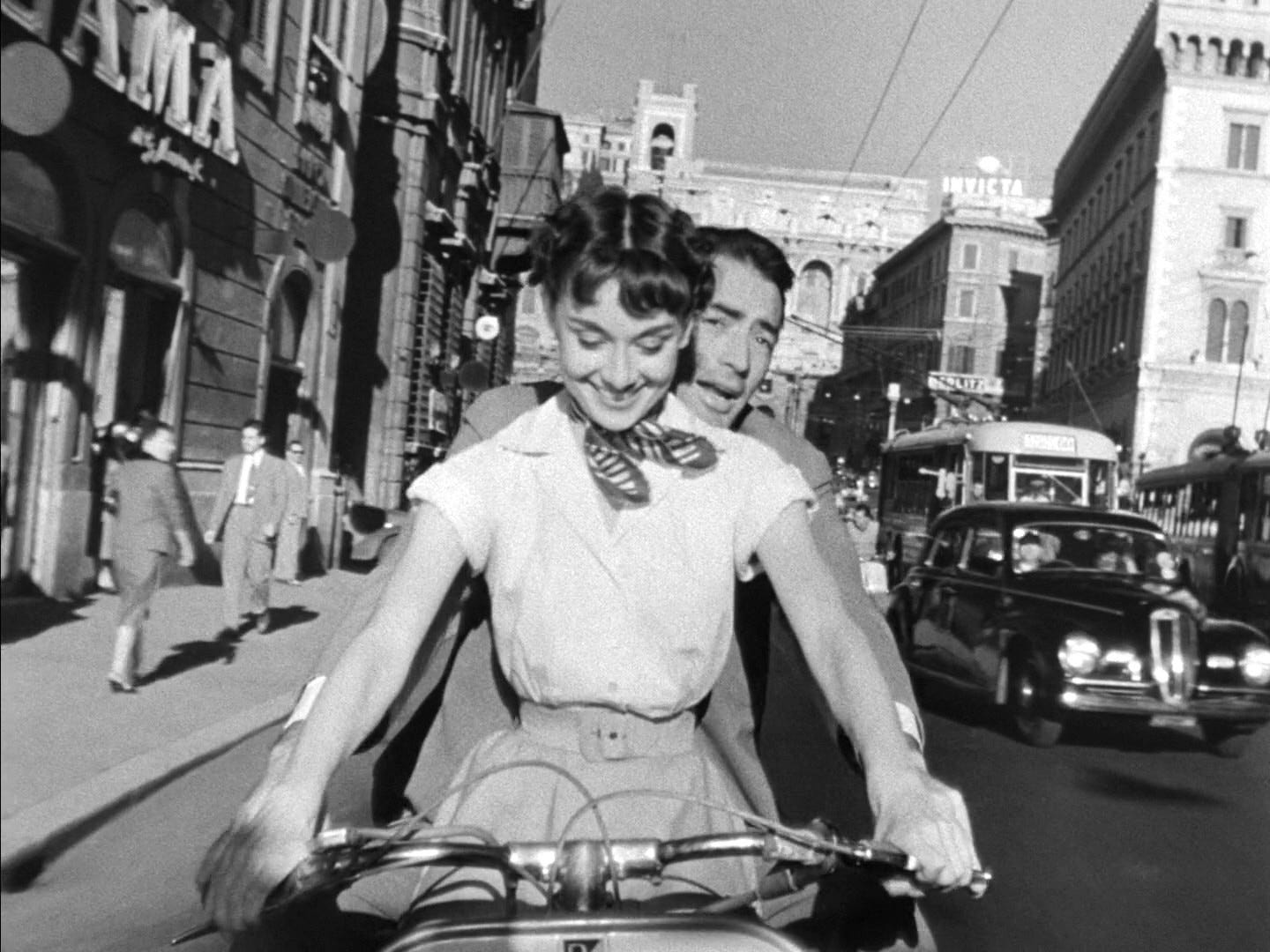
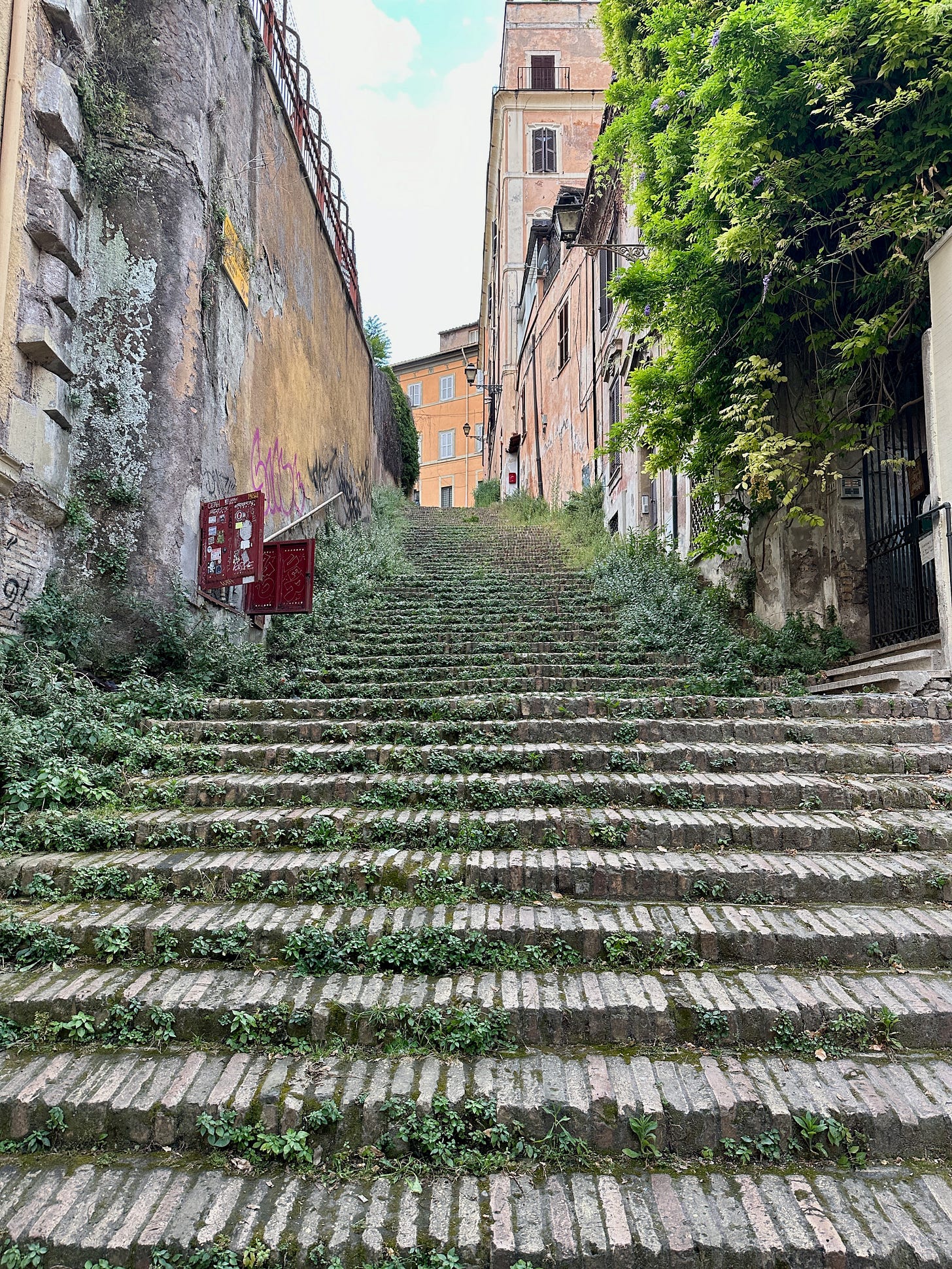
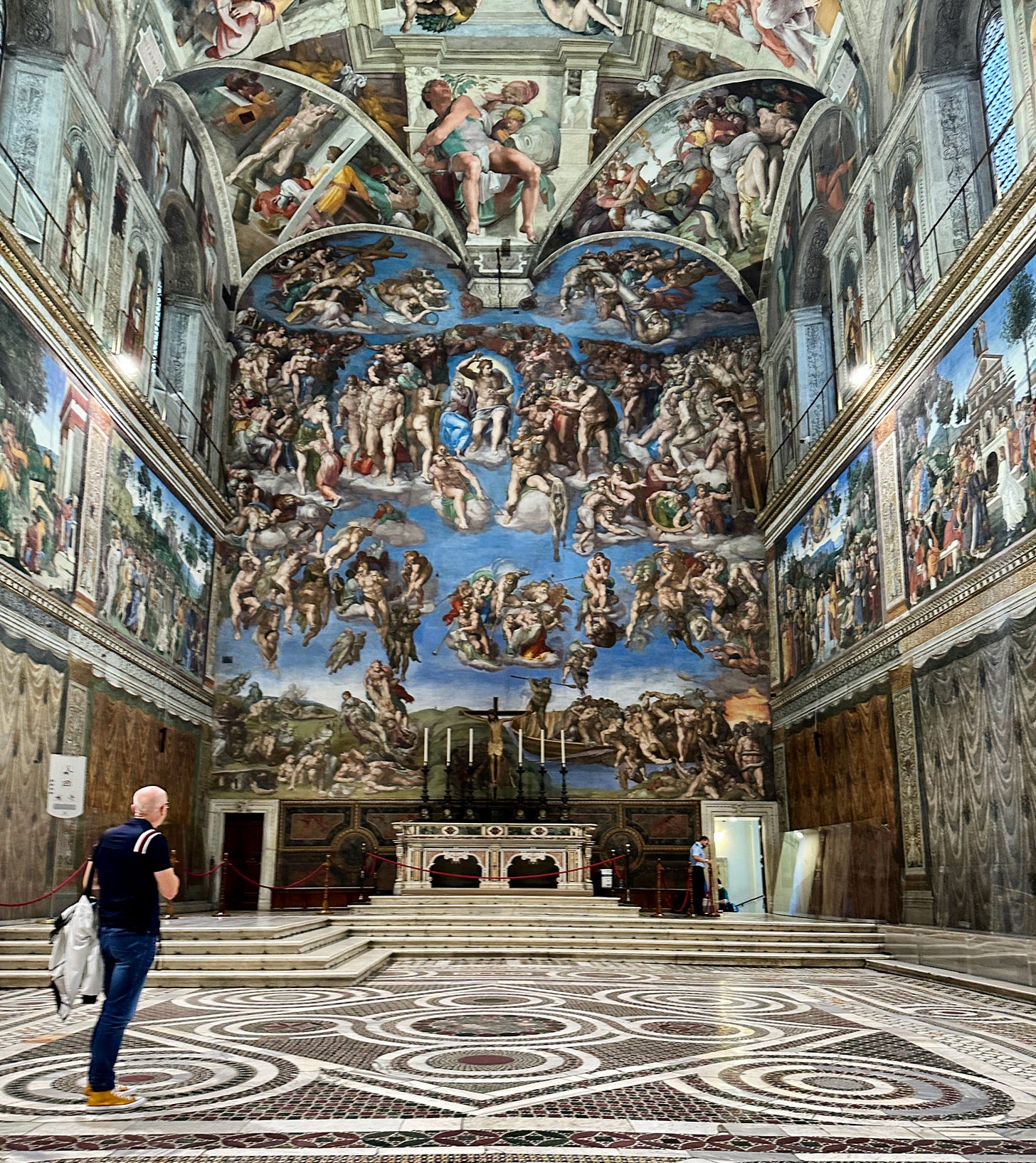
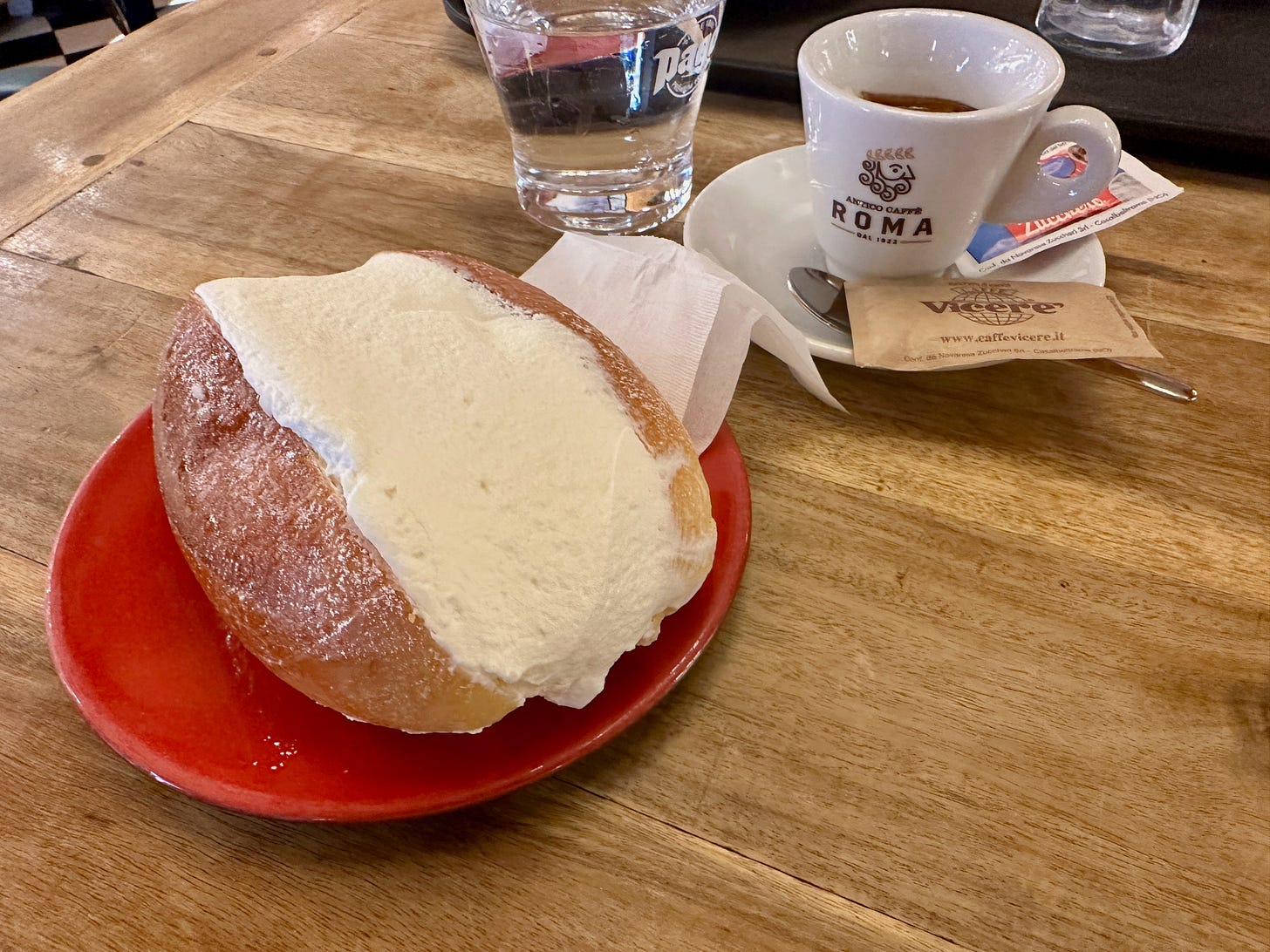
I think I would do anything to spend an afternoon on foot with Danielle. So poetic, observant and knowledgable.
Danielle, your writing is so descriptive - reminded in part of my visit to Rome in October 2022. I would love to do the Master Key tour sometime. My tour of the Sistine Chapel was short, crowded and noisy - detracting from the artistic beauty. I also want to do the Pilgrimage of the 7 Churches.
I was facinated by the way the city planners integrated the new buildings among all the ruins.
Of all the places I visited during my 3 month stay, Rome was my favorite.